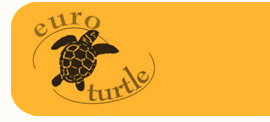Age
Group: From 10 – 12
Week:
______ Week
Date: ______________
Topic:
Threats and Conservation of Sea Turtles.
Time:
45 minutes.
Objectives:
In this lesson, students will learn about sea turtles, and the
enormous challenges that they are facing. Students have to understand
that turtles are undergoing increasing environmental and human
induced stresses. Risk of extinction comes from several source
such as pollution and habitat destruction. Turtles are also scarified
for cultural ritual and in many cases illegally sold for pet trade.
Students have to analyze how the tourism industry is threatening
the lives of sea turtles. The main danger of sea turtles comes
from the degradation of the nesting areas by humans. The uncontrolled
exploitation of beaches and coasts, with the associated speed
boats and light has greatly reduced the available nesting on a
world-wide scale.
Materials:
- Marker
-Coloring Pencils
-Different types of waste materials; magazines, plastic bottles,
plastic bags, etc.
- DVD, ‘Turtles in Trouble’.
-Teachers’ Handouts.
Introduction:
(5
minutes)
Step
1: Map Activity and Explanation
The students are given an outline map of the Mediterranean Sea.
In the course of the lesson the teacher will indicate some of
the most important places and the students will mark them on their
own map.
They should mark on the map the following places:
1. The Strait of Gibraltar
2. The Suez Canal
3. The Red Sea
4. The Black Sea
5. The Three Continents
6. The Atlantic Ocean
Whilst explain where these places are located the teacher should
explain that the Mediterranean Sea is an intercontinental sea
enclosed by land, on the north by Europe, on the south by Africa,
and on the east by Asia.
The Mediterranean Sea is connected to the Atlantic Ocean by the
Strait of Gibraltar on the west and to the Sea of Marmara and
Black Sea, by the Dardanelles and the Bosporus respectively, on
the east. The Sea of Marmara is often considered a part of the
Mediterranean Sea, whereas the Black Sea is generally not. The
man-made Suez Canal in the south-east connects the Mediterranean
Sea with the Red Sea.
Ask the students if they have ever visited a Mediterranean country
and encourage them to share their experience with their classmates.
(15 minutes)
Step 2: Class Activity:
Give the sheet, “A Mosaic of Monuments and Cultures”,
to the students asking them to look at the pictures. They must
work in pairs and answer the following questions:
a) Do you recognize any of these monuments?
b) In which countries are they found?
c) Name other monuments that are found all over the Mediterranean
region.
These ideas are shared with the rest of the class.
Students should understand that the Mediterranean was the cradle
of civilization in Ancient Times. It was a superhighway of transport
in ancient times, allowing for trade and cultural exchange between
emergent peoples of the region - Egyptians, Greeks, Romans, and
the Middle-Eastern cultures. The history of the Mediterranean
is important in understanding the origin and development of Western
Civilization. Stating that its richness stems from the fact that
the sea is almost totally enclosed by three continents which led
to constant interaction between the races and cultures that inhabited
them.
(12 minutes)
Closer:
Assign work that should be handed in the following week. Summary
of the most important points that we have tackled during the lesson.
(10 minutes)
Assessment / Evaluation:
The class should be divided into three separate teams. Each team
should represent a continent bordering the Mediterranean; Europe,
Asia or Africa. Each team should make a research abouto the different
type of animals that live in this region. This work should be
presented on a chart, so that the other pupils will learn from
the work of their class mates. This should set ground for the
following lesson. Read the handout: Millions of Years Ago, from
the MEDASSET Educational Kit, “The Mediterranean Sea: A
Source of Life”.





